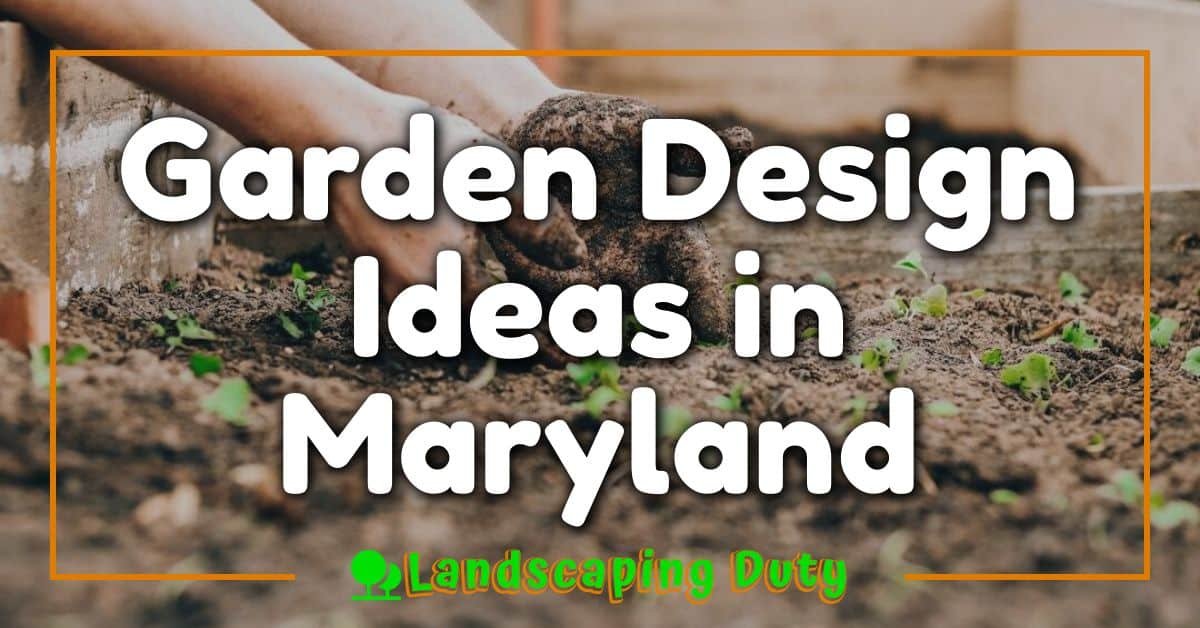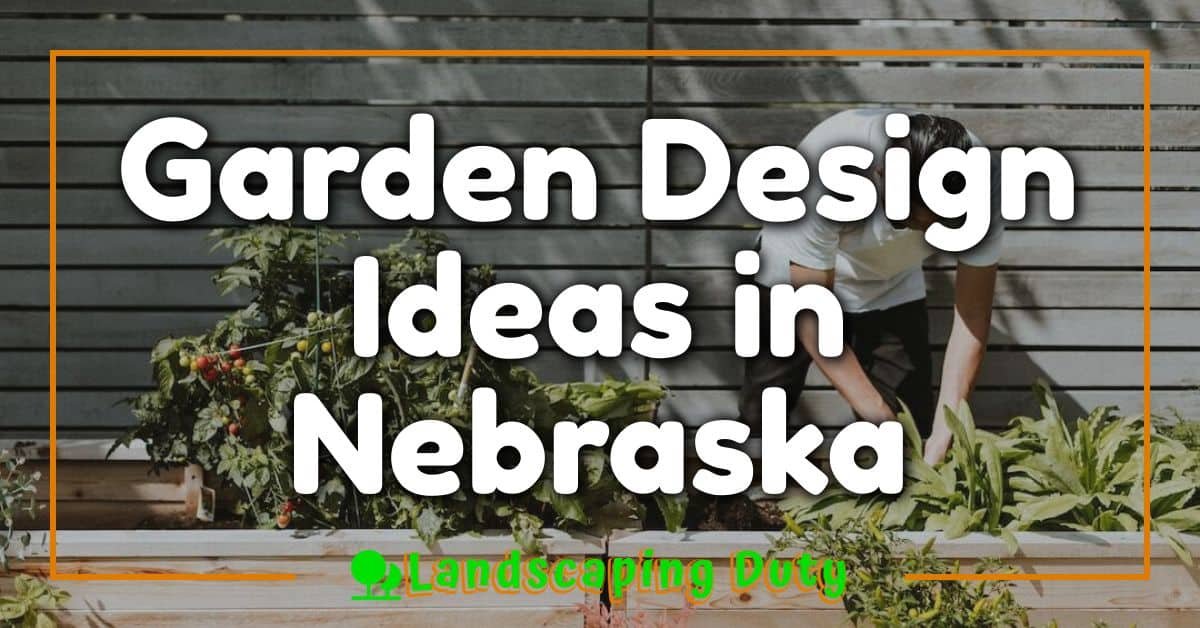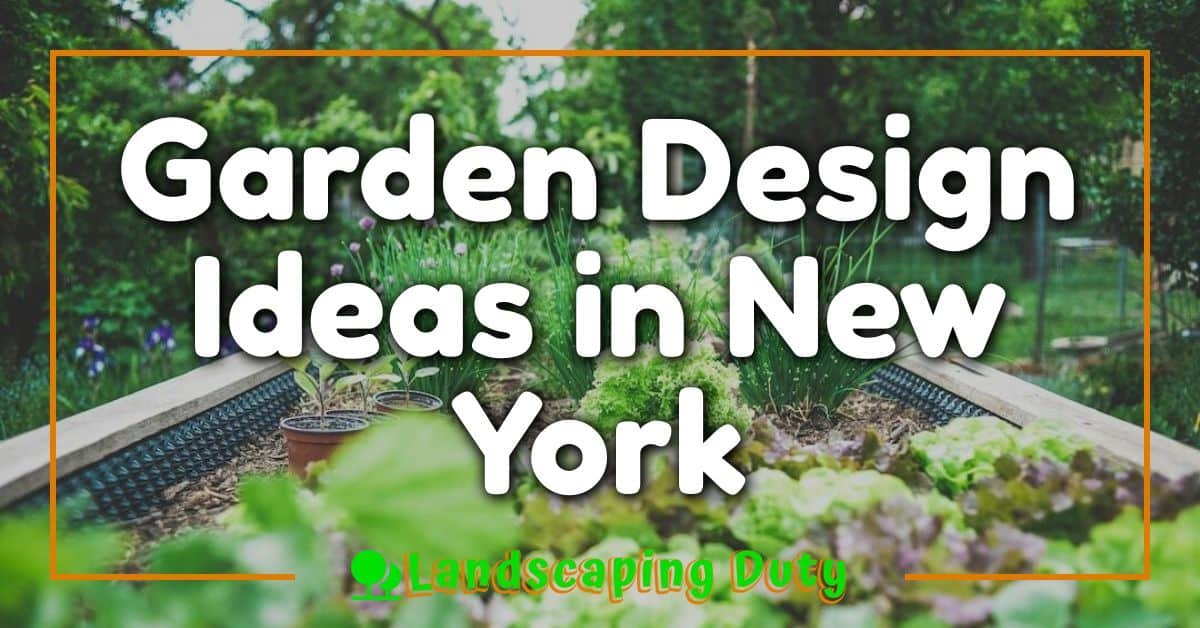Are you dreaming of creating a sanctuary in your backyard right here in Virginia? Well, my friend, I’m stoked to let you know that transforming your outdoor space into an oasis is not as daunting as it might seem. With the right garden design ideas, you can achieve that dreamy landscape you’ve been picturing in no time.

Whether it’s the rustic charm of Charlottesville or the coastal vibes of Norfolk that inspired you to revamp your garden, Virginia’s diverse flora and climate offer endless possibilities. From vibrant azaleas to fragrant magnolias, incorporating native plants could be a game-changer for your green space.
But remember, it’s not just about the plants. A well-designed garden should reflect who YOU are! Personal touches like a cozy fire pit for those cool Virginia nights or a charming birdbath can make all the difference. You’ve got this! Let’s dive into some unique garden design ideas tailored specifically for Virginians like yourself.
Understanding Virginia’s Gardening Zone
So you’re ready to get your hands dirty and create a beautiful garden in Virginia, huh? Before you delve into this exciting venture, it’s important to understand the gardening zone of this diverse state. Knowing your zone can make all the difference between a thriving oasis and a disappointing plot.
Virginia falls primarily within USDA hardiness zones 5 through 8. What does that mean for you? Well, these zones are based on average extreme minimum temperatures at a given location during a particular time frame. It’s like a cheat code helping you determine which plants are most likely to survive and thrive in your area.
In the colder Zone 5 found in western mountain areas of Virginia, tough plants like junipers or daylilies might be your best bet. As we move towards the warmer Zone 8 along the coastal regions, options expand! You’ll be able to grow more heat-loving plants such as camellias or oleanders.
Wondering how this change affects vegetable gardening? Let me tell ya – it does!
- In Zones 5-6, start cool-season veggies early in spring and warm-season ones only after danger of frost has passed.
- Zones 7-8 offer longer growing seasons so you can enjoy multiple harvests of both cool and warm-season crops.
Remember folks, understanding your gardening zone is just step one towards designing an enchanting garden space right here in Virginia!
Choosing the Right Plants for Your Virginia Garden
Now, let’s get into the fun part – choosing plants for your Virginia garden! It’s not just about picking what looks pretty. You need to consider a few factors like your local climate, soil type, and how much maintenance you’re willing to put in.
In Virginia, you’re dealing with a humid subtropical climate. This means hot summers and cool winters; perfect for a variety of plants! But remember, some plants thrive better than others here. Here are some recommendations:
- For sunny spots in your garden, try planting Black-eyed Susans or Purple Coneflowers. They’re both native to Virginia and can handle the heat.
- Need something for shade? Consider Hostas or Ferns. They love cooler conditions but still provide that pop of greenery you’re looking for.
- If you want year-round color, Evergreen shrubs might be your best bet!
But hey, it’s not just about weather conditions. The soil in your garden plays an equally important role! Let’s break it down:
| Soil Type | Optimal Plants |
|---|---|
| Sand | Beach Sunflower, Prickly Pear Cactus |
| Clay | Coneflowers, Black Eyed Susan |
| Loam | Most Vegetable Plants |
Finally, think about maintenance level when making plant choices. Sure enough that Japanese Maple is gorgeous but remember it requires regular pruning.
To sum up: take time understanding what works in your specific environment before rushing out to buy plants. Trust us – nothing beats seeing your chosen plants thriving because they love where they are as much as you do!
Implementing Native Virginian Plants in Your Design
You’re on a roll with your garden design, but now you’re wondering how to incorporate some true Virginian flavor into it. Well, you’re in luck! Virginia’s rich biodiversity offers an array of native plants that not only look stunning but are also well-adapted to the local climate and soil.
Now let’s dive right into it. Among the most popular native plants is the Virginia Bluebell (Mertensia virginica). This perennial beauty blooms from March to June, covering your garden in a sea of blue-violet flowers. You’ll find them perfect for woodland gardens or shady borders.
Next up is the Eastern Redbud (Cercis canadensis). An elegant small tree, this plant bursts into life early spring with pink blossoms before its heart-shaped leaves emerge. It’s a fantastic choice if you want something that offers year-round interest as it flaunts yellow foliage during fall.
Here are few more options for your consideration:
- Mountain Laurel (Kalmia latifolia): Known for its spectacular flowering clusters.
- Cardinal Flower (Lobelia cardinalis): A hummingbird magnet with vibrant red flowers.
- Switchgrass (Panicum virgatum): A versatile grass ideal for creating natural privacy screens or adding texture.
Remember, when selecting native plants, consider factors like sunlight requirements and soil type to ensure they thrive in their new home. Moreover, embracing these indigenous flora not only beautifies your garden but also helps support local ecosystems by providing habitat and food sources for wildlife. So go ahead and give your garden that authentic Virginia touch!
Incorporating Water Features in Virginia Gardens
Hey there! So, you’re pondering about adding a splash of water to your Virginian garden? Let’s dive right in!
« Garden Design Ideas in Tennessee: Your Guide to a Southern Eden Garden Design Ideas in West Virginia: Your Guide to a Stunning Backyard »
Water features have become a major trend for gardens across the Old Dominion. They can totally transform your outdoor space while also providing a tranquil atmosphere that’s just perfect for those lazy Sunday afternoons.
Now, when it comes to water features, you’ve got plenty of options. Perhaps you’re dreaming of an ornamental pond filled with colorful Koi fish or maybe it’s the soothing sound of a bubbling brook that gets you excited. You could even go all out and install a stunning waterfall feature as the centerpiece of your garden!
Keep in mind though, not all plants love being near water as much as we do. That said, some species thrive around these kinds of environments. Here are some top picks for flora that pair beautifully with water features:
- Cardinal Flower: Known for their bold red blooms, they’re native to Virginia and love wet soil.
- Swamp Milkweed: Another native plant with lovely pink flowers that attract butterflies.
- Horsetail Reed: This unique plant adds texture and loves moist conditions.
Virginia’s climate plays an essential role in determining what type of water feature will work best for your garden. It’s relatively humid here which means certain types of aquatic life can flourish better than others. For instance, goldfish tend to do well in this kind of environment but tropical fish might find it too cold during winter months.
What about maintenance? Well, depending on the type and size of your chosen water feature, upkeep can range from very minimal (think self-contained fountains) to more involved (such as ponds). In general though, regular cleaning is necessary to prevent algae growth and ensure clear waters.
So there you have it! Your guide to incorporating water wonders into your Virginia garden is complete! Now it’s time to make a splash and start planning your own water feature. Happy gardening!
Utilizing Local Materials for Garden Structures
Are you thinking about adding a little charm to your Virginia garden? You’re on the right track! Using local materials for your garden structures not only gives an authentic feel but also supports sustainability. Let’s dive in and explore how you can infuse local character into your landscape.
First off, let’s talk about using reclaimed wood. In Virginia, there’s plenty of it, from old barns to fallen trees after a storm. This rustic material is perfect for everything from trellises to planters. It’s eco-friendly, sturdy, and best of all – each piece tells its own story!
Ever thought about incorporating native stones into your design? Virginia’s diverse geology offers a variety of stones that can add color and texture to any garden setting. They can be used for pathways, borders or even as focal points in the form of boulders. Plus, they’re low maintenance and able to withstand Virginia’s changing seasons.
Then we’ve got bricks – they’re plentiful in this historical state! Colonial Williamsburg is known for its classic brick architecture which you could replicate in your backyard with brick paths or patios. Not only do they offer durability but also evoke an old-world charm that never goes out of style.
What if we told you that seashells could be a unique addition too? Coastal Virginia offers an abundance of shells that can be used as organic mulch around plants or even incorporated into mosaics for stepping stones or bird baths.
So there you have it! From reclaimed wood to native stones and seashells – these are just some ways how utilizing local materials could enhance the look and feel of your Virginia garden while promoting sustainability. Remember though: while DIY projects are fun, don’t hesitate to reach out to professionals when needed!
Creating Wildlife-Friendly Spaces in Your Garden
Ever wondered how you could do your part to support local wildlife? It’s simpler than you might think. By incorporating a few key elements into your garden design, you can create a haven for local Virginia critters.
First things first, let’s talk plants. Native plant species are the perfect starting point when designing a wildlife-friendly space. They’re not only adapted to thrive in Virginia’s climate but also provide familiar food and shelter for native animals. You’ll be amazed at the variety of birds, bees, butterflies, and other creatures that’ll frequent your garden just because of these plant choices!
Water sources are another major element to consider in this friendly transformation process. A small pond or birdbath serves as an ideal watering hole for many types of wildlife. Just remember to keep it clean and fresh – nobody likes stale water!
Thirdly, don’t forget about providing shelter! This could be anything from a birdhouse or bug hotel to letting a portion of your yard grow wild with tall grasses and shrubs. These areas offer safe nesting sites and protection from predators.
Lastly, try ditching those harsh chemical pesticides and fertilizers – they’re no friend of yours or the environment’s! Instead, opt for organic alternatives which won’t harm beneficial insects or pollute nearby water sources.
By implementing these ideas into your garden design plan, you’re not just creating an aesthetically pleasing outdoor space but also contributing significantly towards maintaining local biodiversity right here in Virginia!
Seasonal Care Tips for Virginia Gardens
If you’re a proud owner of a beautiful Virginia garden, then you know how much work goes into maintaining it. But don’t fret! We’ve got some handy tips to help you keep your garden flourishing all year round.
Spring is when most plants wake up from their winter slumber. Start by cleaning up any debris left from winter storms and begin pruning your shrubs and trees. Kickstart your compost pile with fallen leaves and other organic waste to make nutrient-rich soil for your plants. It’s also the best time to plant annuals like petunias or marigolds that’ll add vibrant colors to your garden.
As summer rolls in, watering becomes crucial due to hot temperatures. Remember, it’s better to water deeply but less frequently than light daily sprinkles. This encourages roots to go deeper into the soil which helps them withstand dry spells better. Mulching is another summer essential – it keeps the soil cool and prevents water from evaporating too quickly.
Fall calls for preparation as winter approaches. You’ll want to clean up any fallen leaves promptly as they can smother grass and harbor diseases if left unchecked. It’s also an excellent time to plant bulbs such as tulips or daffodils that will bloom in spring.
Winter might seem like downtime, but there’s still work to do! Protecting your plants against frost is paramount during this season – using burlap wraps for young trees or applying mulch around perennials can do wonders in shielding them from harsh cold winds.
So there you have it – a quick guide on how best you can care for your Virginia Garden throughout each season!
Conclusion: Bringing Your Virginia Garden Design to Life
Finally, you’ve reached the last stage of your garden design journey. It’s time to bring all those wonderful ideas and plans into reality.
Let’s start with the basics – consider enlisting professional help if your project seems overwhelming. Experienced landscapers not only offer their expertise but can also save you time and potential headaches in the long run.
If you’re feeling adventurous and plan on making this a DIY project, remember that patience is key. Transforming your garden isn’t an overnight process. Start small, focus on one section at a time, and gradually work your way through your landscape design. That way, it won’t feel as daunting and you’ll be able to enjoy each step of the transformation.
Also important is choosing plants native to Virginia, which ensures they’ll thrive in local climatic conditions:
- Eastern Redbud
- Sweetbay Magnolia
- Flowering Dogwood
- Mountain Laurel
Incorporating these species will create a lively display of colors throughout different seasons while also attracting local wildlife like butterflies, birds, and bees.
Remember to utilize outdoor elements like water features or art installations for added personality. They serve as fantastic focal points that draw the eye around your garden space.
Lastly, don’t forget about lighting! Illuminate walkways for safety during evening hours or install decorative lights for extra ambience during night-time gatherings.
Bringing your Virginia garden design to life might seem like a big task now but once you see the fruits (and flowers!) of your labor, it’ll all be worth it. So go ahead—dive right in and let nature be your canvas. Happy gardening!











